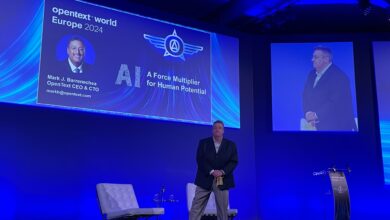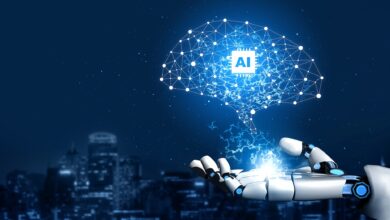It is now widely understood that we are living through a period of climate change. Rising global temperatures, rising sea levels and increasingly erratic weather patterns are with us today, and around the world drastic action is needed to avoid the worst case scenario.
The combination of Artificial Intelligence (AI) and the Internet of Things (IoT) has much to offer those looking to change business practices, and could have a positive impact on many sectors. Here, we will focus on just three: the energy industry, supply chain management, and agriculture.
Defining AI and the IoT
The Internet of Things is a collective name for sensors that can remotely transfer data through a network without the need for human interaction. Instead they engage in Machine to Machine (M2M) communication, and the data they share can be aggregated and analysed. The data IoT devices collect might be very discrete: soil temperature, an air quality reading, the location of an item at any particular time, the presence, or absence of a substance. Such readings are difficult for humans to make, but easy for machines to make.
A collection of data received by an IoT device and sent to a central store is just a collection of data. But it can be automatically analysed by applying Artificial Intelligence (AI). AI is often thought of in terms of large, complex computational structures that take into account many thousands of factors. And this is accurate. But AI can also look at individual data elements and identify patterns, note when thresholds are breached, or spot trends. It can send alerts to individuals who can then make decisions on what to do, or even make decisions and initiate itself.
So exactly how can AI and IoT help drive towards a more sustainable world for its citizens when it comes to the energy industry, supply chain management, and agriculture?
The energy sector
Energy one of world’s largest sectors, employing hundreds of thousands of people and generating billions in revenues annually across renewables and the fossil fuels we need to eliminate from the market. The diversity of operations in the sector provides ample opportunity for AI and IoT integration.
Sensors can continuously monitor for the presence of flammable gases and toxic vapours in the atmosphere. In the supply infrastructure they can collect data on temperature and pressure in pipelines, pumps and compressors. AI can be used to identify and report trends revealed by this data and provide real-time insights in areas such as operational efficiency and asset failure, helping to improve productivity, efficiency, risk management and regulatory compliance.
The use of energy is a key component in measuring carbon footprints, and AI has a role to play here too. A report from Microsoft and PwC, how AI can enable a sustainable future claims that AI technologies could reduce greenhouse gas emissions by up to 4% (2.4 gigatons) by 2030, help create nearly 40 million new jobs worldwide and a grow the global economy by $5.2 trillion. The report gives a number of examples of how AI and IoT can work together to help create this new reality, from smart monitoring of energy consumption to predictive infrastructure maintenance.
Supply chain management
Monitoring the movement, location and condition of goods across the supply chain can be complex, particularly when that movement is across international borders, and when supply chains are interrupted, as we have seen recently both globally as a result of Covid-19, and more locally in the UK and EU as a result of Brexit.
A combination of AI and IoT sensors can be used to monitor and track palettes and even individual goods packages, from the moment they leave the depot to the moment they are in the customer’s hands.
When it comes to transporting goods, AI and IoT are driving improvements from an environmental sustainability perspective. IoT sensors allow air pollution to be monitored in real-time using air quality sensors that rapidly and accurately identify pollution or contaminants in the air. Vehicle emissions can be tracked, and remedial action taken as soon as issues are spotted, helping fleet managers to ensure they meet any environmental or emissions based requirements.
The agriculture sector
There has been a huge rise in ‘agritech’ in recent years, with multiple factors at play including rapid population growth, dwindling and inefficient resource management and climate change impacting cultivation and raising livestock.
The sector is increasingly using AI and IoT to strengthen productivity, combat waste, reduce environment impact and improve resource management relative to yield. Sensors can obtain data on the conditions of soil such as the level of acidity, soil moisture and temperature. The application of AI to this data can inform farming practices.
The emerging technologies of IoT and AI are helping us in the fight to combat climate change by providing business leaders with tools that can help them with efficiency, productivity, waste reduction and compliance. As we step up to the challenges of the next decade and more, it is time for business leaders to step up to the plate and, with the help of the IoT and AI, pause and rethink the status quo of their industry to put transparency, efficiency and sustainability at the core.





